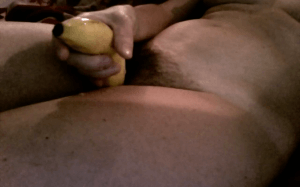Ugly Feelings by Sianne Ngai:
I find this text very dense and quite difficult so Im not sure How well I can summarise.
Ngai talks about feelings that are normally classed as more negative and less desirable… she refers to envy, irritation, boredom , anxiety, paranoia. This feelings are associated with the contemporary historical time and Ngai says that these feelings do not offer any satisfaction of virtue,cathartis. They are flat feelings that have the capacity to endure and stay for very long periods and they are considered to be negative… as oposed to the more drammatic feelings like anger, rage and fear… that come with a suddenness and imply more action and trajectory.
These ugly feelings cause an effect of repulsion and they have a tendency to promote what Susan Feagin calls ” Metaresponses’… because together with the feeling.. comes the feeling that one should not be feeling that way. that it is bad to feel that way and one should avoid it at all cost.
Ngai points out that this non cathartic feelings engender art brings to the fore the failure of emotional release.
Ngai explores this feelings through literature and films from authors like Herman Melville, Nella Larsen, Sigmund Freud, Alfred Hitchcock, Gertrude Stein amongs others.
Quotes:
“These feelings can also be described as ‘ semantically’ negative, in the sense that they are saturated with socially stigmatising meanings and values or ‘ syntactically’ negative, in the sense that they are organised by trajectories of repulsion rather than attraction, by phobic ‘ strivings away from rather than ‘philic’ strivings, ‘toward’ “.
” The anti cathartic device of dilating the time in which any particular incident takes place thus accentuates the manner in which these uneventful moments mirror the general situation of obstructed agency that gives rise to all thses ugly feelings I examine, allowing them to function as political allegories…”
Jennifer Doyle- Hold it against me: Difficulty and emotion in contemporary art.( Chaperts 1 and 2)
In this text Doyle discusses what is it that makes it difficult to understand and cope with certain works of art that deal with emotion. In the introduction she focuses mainly on two particular performance works : Adrian Howells’ Held and Ron Athey’s Four scenes in a Harsh life . She also touches on Ricardo Dominguez’s Transborder immigrant too (Tit) and Guillermo Gomez pena’s Mapa corpo.
Doyle starts by expressing her own difficulty with dealing with Held, this is something that surprised her as she had been to many challenging performances and had been able to cope with lots of gore. However she realises that this particular performance ( a one to one experience where the artist explores intimacy with the public in 3 stages , starting with just talking, then holding hands and finally spooning on a bed) is too close to home. Too real and that ie precisely what makes it difficult to deal with, it is difficult for one to distance themselves from it.
Athey, Dominguez and Gomez Pena’s work have all been controversial and Doyle notes that
‘ Emotion, specially when coupled with legible politics, appears as critically indigestible matter, a road block to “serious criticism” ‘ (pg12)
For Doyle is important to turn away from traditional art criticism which by labelling works like the one’s discussed in this book as Obscene, criminal, not art, etc.. actually avoid the discussion of the issues that the particular works are trying to talk about.
Doyle compares these works to traditional music forms relationship with “Punk and Metal”. Punk and Metal music having been branded as noise.
Doyle points out that the affect that a permormance causes can appear as ‘ an interference, as a rupture in which the viewer is thrown back onto a dissoriented self. That noise feels like the other side of art’ (pg22). She goes on to say that bringing one’s own body into one’s work causes a “noise” that confronts traditional definitions of art.
At the end of the introduction Doyle strongly expresses her view that ‘ in the space of the performance, you adjust and accomodate to what’s happening and also the flexibility of our own desire. If you can’t, you look away or you leave’.
In the 2nd chapter, Three case studies in difficulty and the problem of affect, Doyle exposes three works of art that in their time cause controversy by their social effect.
The works were:
- Untitled (2008) by Aliza Shvarts. This was a piece that Shvarts as an Art student at Yale university wanted to use for her final year thesis but it provoqued such a public emotional response and outrage that she was obliged to stop it and forbidden to use it in her course work. The piece was based on her inseminating herself over 9 monthsand then taking herbal abortive mediacation at the same point in her menstrual cycle, to miscarry. She never had any pergnancy test so it is unknown if she was ever pregnant. Shvarts refused to talk about her feelings at all and as Doyle points out, by doing this we don’t know if she even felt anything at all and thus we are left to do all the feeling.
- Portrait of Dr Samuel Gross ( The Gross Clinic) (1878) By Thomas Eakins. The painting depicts an operation taking place at a teaching hospital, with students around, some interested and some not, the gaping wound very obvious and clear and a woman that cannot see the wound from where she is standing but nevertheless fins the hole affair very difficult to deal with.
As Doyle notes, this painting is not just difficult , it is about ‘difficulty and about mastering one’s limits as a viewer.
These limits are represented as emotional and are marked as feminine in the figure of a woman so overcome with
feeling that she turns away from the action.
Doyle points out that works like this painting are difficult because they challenge the ‘social being’. She brings Judith Butler’s views of the vulnerability of the body into this:
“Each of us is constituted politically in part by virtue of the social vulnerability of our bodies as a site of desire and physical vulnerability, as a site of a publicity at oce assertive and exposed. Loss and vulnerability seem to follow from our being socially constituted bodies, attached to others, at risk of losing those attachments, exposed to others, , at risk of violence by virtue of that exposure.
- Incorruptible Flesh: Dissociative Sparkle (2006) by Ron Athey. In this performance Athey lays on a kind of metal bed made of scaffolding tubes. his eyes are permanently open by having his eyelids pulled backwards by hooks. there is someone that has the job to apply saline drops to his eyes to prevent them from drying as he cannot blink. He has also a baseball bat inserted in his anus. The public are invited to apply vasseline to his body as if they were caring, looking after it. Doyle quotes Amelia Jones in this text noting how in this performance Athey breaks out of the patriarchal norms that rule gender and show us a body that is plastic, permeable and fragile.
Doyle says about this performance and I think the other two could be included in this, that even though this is not political in the same way as protest march, it is still ‘powerfully an act of political defience’.
Halberstam, The queer art of failure:
I have found this a difficult text with that looks at different startegies for feminism that I had never considered, like masochism. Like refusal to be.
Halberstam talks about Spivak seeing intelectuals as having they part in formein ‘the Other ‘ as the shadow of the self, as being the ones that know better than their collonised subjects. Halberstam talks about the importance of breaking the mother daughter bond as this bond is to blame for perpetuating the status quo. She talks about acts of masochism and unseeing as a mechanism to refuse normativity.
How might the deployment of ‘negative affects’ in performance be a useful strategy?
How does boredom act in performance? How can it be a political affect?
How does disgust act in performance? How can it be a political affect?
How can ‘difficulty’ in performance be deployed to bring up questions around identity, intimacy, the performing body, etc.?
Using negative affects in performance can subvert what is considered negative. That what is considered disgusting, abject, can be turned on its head and turned into a success… as in the case of The Famous Lauren Barri Holstein’s shows Splat and How to be come a cupcake. It Can be used to question why is something abject or considered disgusting and through that questioning change may be possible.
Difficulty, boredom and negative affects can be used in performance to empower that which is considered negative and abject because it is not part of mainstream.

